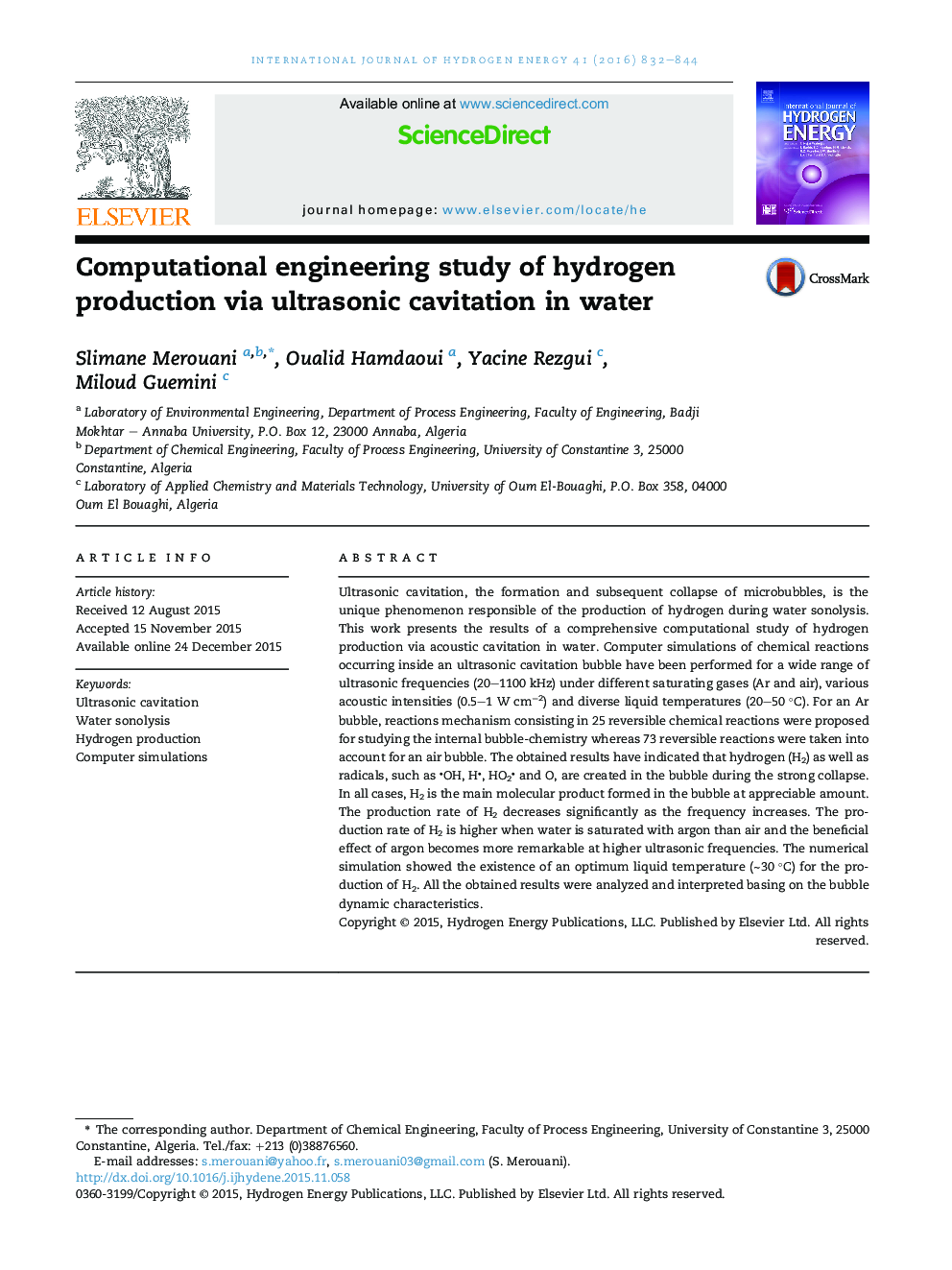| Article ID | Journal | Published Year | Pages | File Type |
|---|---|---|---|---|
| 7712479 | International Journal of Hydrogen Energy | 2016 | 13 Pages |
Abstract
Ultrasonic cavitation, the formation and subsequent collapse of microbubbles, is the unique phenomenon responsible of the production of hydrogen during water sonolysis. This work presents the results of a comprehensive computational study of hydrogen production via acoustic cavitation in water. Computer simulations of chemical reactions occurring inside an ultrasonic cavitation bubble have been performed for a wide range of ultrasonic frequencies (20-1100 kHz) under different saturating gases (Ar and air), various acoustic intensities (0.5-1 W cmâ2) and diverse liquid temperatures (20-50 °C). For an Ar bubble, reactions mechanism consisting in 25 reversible chemical reactions were proposed for studying the internal bubble-chemistry whereas 73 reversible reactions were taken into account for an air bubble. The obtained results have indicated that hydrogen (H2) as well as radicals, such as OH, H, HO2 and O, are created in the bubble during the strong collapse. In all cases, H2 is the main molecular product formed in the bubble at appreciable amount. The production rate of H2 decreases significantly as the frequency increases. The production rate of H2 is higher when water is saturated with argon than air and the beneficial effect of argon becomes more remarkable at higher ultrasonic frequencies. The numerical simulation showed the existence of an optimum liquid temperature (â¼30 °C) for the production of H2. All the obtained results were analyzed and interpreted basing on the bubble dynamic characteristics.
Related Topics
Physical Sciences and Engineering
Chemistry
Electrochemistry
Authors
Slimane Merouani, Oualid Hamdaoui, Yacine Rezgui, Miloud Guemini,
